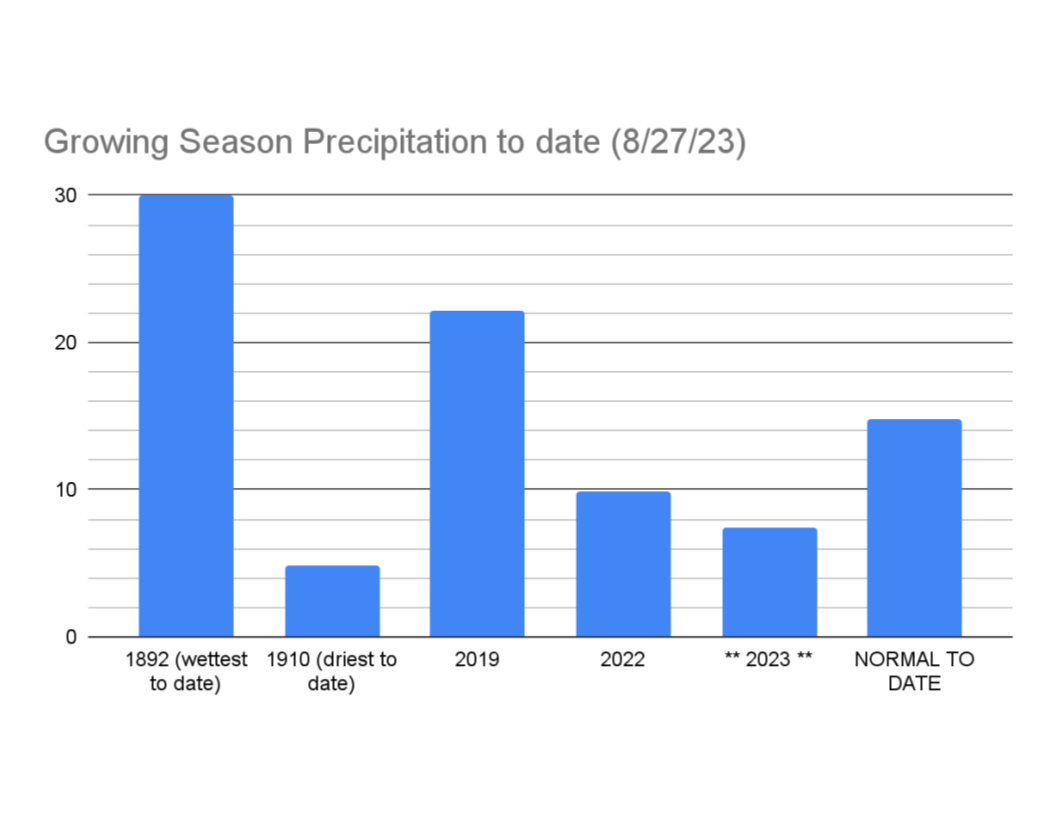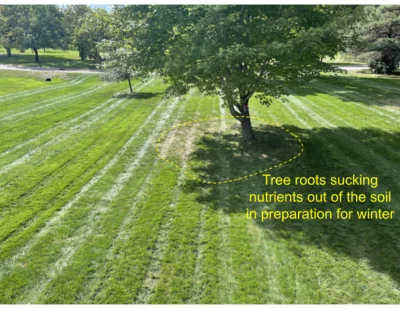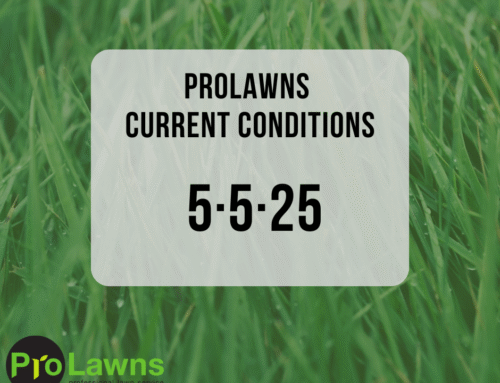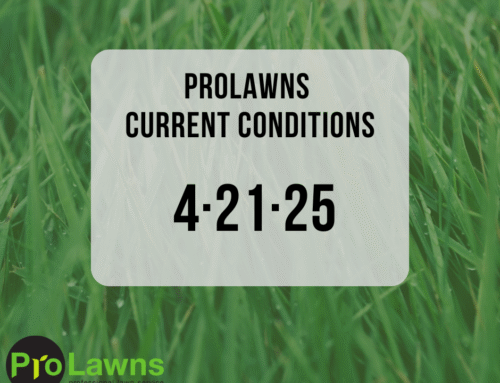What we’re noticing:
- It’s Dry! and Hot!
- We’ve been about three weeks without any significant precipitation. There isn’t much promise in the forecast.
- We’re still at about half of what normal precipitation is by this time in the growing season. Some (I guess) good news is there have been 4 growing seasons since 1871 that have been dryer so far than we are now.
-
- Last week was a scorcher and despite this cool weekend; it looks like it will be above average temps again this week and into the 90*s next week.
- Lawns are looking decent due to the rain we got a few weeks back but that will start changing and they will be declining again soon.
- It’s wild how closely our precipitation pattern has followed last years. The only time we’ve been more than an inch different at any give time is that we started with a bunch more snowfall in April of this year.
What we’re doing:
- We should be wrapping up our aeration and overseeding Late-Summer / Fall lawn renovation this week. There will be new signups and a few stragglers but we’re about done which is perfect for the sunny lawn areas that have been struggling the last few years.
- We’re on our final round of applications for the season! We’re monitoring who’s been seeded and timing out when the Fall app will be completed.
- See more info about our Fall Application below
What you can be doing:
- If you or we seeded; YOU NEED TO WATER. We’re not getting any help from mother nature here.
2. You will need to start watering your lawn to avoid areas drying out again.
3. I highly recommend watering your tree’s root zones. These will be the first areas that dry out in your lawn since all plant roots are going to be sucking up nutrients and water going into the Fall. There’s not much moisture available now for your trees though.
About our Fall Application (It’s different!)
- Timing – Many companies perform this application in October with granular fertilizer and while this is common practice, it is far from the best thing for our lawns and environment. Our lawns will be switching from “upward” top growth to “downward” root growth as temperatures start to decrease. In October, they are switching from downward growth to dormancy. Dormant turf does not take in nutrients. These are not “snap-of-the-finger” transitions; lawns begin taking in less and less nutrients as we go into October with everything applied at the end of the month simply running off the lawns and into our waterways.
- The average first 28* freeze date for the Twin Cities is between Oct 11th and Oct 20th (Source) with frequency of freezes increasing as the calendar progresses.
- In accordance with common sense and the University of Minnesota: “Do not apply fertilizer if the forecast is for a hard freeze within a week of application, and never apply fertilizer to frozen ground or snow-covered ground. To ensure nutrients in the fertilizer stay held where applied, they need time to react with the soil… If the ground is frozen, those nutrients won’t hold in the soil.” While every year is different, it obviously makes sense to plan to have our fertilizer down before Oct 3rd to ensure it does not run-off into our environment and is taken in to be used by our turf so you get your money’s worth.
- What – Also in contrast to most other companies, we apply liquid fertilizer during our Fall Application as opposed to granular fertilizer for a couple reasons:
- [10/30/23 Edit] – “Potassium to ‘put your turf to bed’ is old stuff” – Jon Trappe, University of Minnesota Field Day 9/27/23
- Granular fertilizer is basically set on top of the soil where it waits for rain in the Fall. Depending on the amount of rain, it starts to break down into the nutrients that are available to the grass. These nutrients then navigate down through the soil and hopefully make contact with and are taken in by the grass roots. This process takes 1-2 weeks with an immediate rain and accordingly longer if it takes a while for a significant rain. Likely a fraction of the nutrients in granular fertilizer applied after mid-September will be of benefit to your lawn. This is worsened if the granular fertilizer has “slow release” content. And no, the slow release granular fertilizer does not wait until Spring. It is just washed off the frozen ground with the winter snowfall and early Spring rains.
- Liquid Fertilizer is applied right on the grass in the form immediately available to the grass. There is no wait or transition period. None is lost to run-off and significantly less is lost to the soil leaching. That fertilizer is taken in by the grass and nutrients are sent to the roots for winter storage starting the moment it hits the grass blade. You’ll see the results of this with wildly healthy and green grass very early next Spring.
- Fall is the best time to control broadleaf weeds. The same downward flow of fertilizer applies to the downward flow of our weed control products into the core of the invasive weeds that might try to invade your lawn. The specific products that we use going to the core of the weed this time of year ensure a blank slate when it comes to weeds next year.










